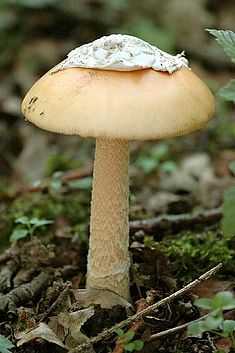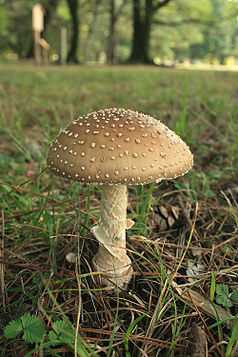Amanita subjunquillea
| East Asian Death cap | |
|---|---|
| Scientific classification | |
| Kingdom: | Fungi |
| Division: | Basidiomycota |
| Class: | Agaricomycetes |
| Subclass: | Hymenomycetes |
| Order: | Agaricales |
| Family: | Amanitaceae |
| Genus: | Amanita |
| Species: | A. subjunquillea |
| Binomial name | |
| Amanita subjunquillea S. Imai | |
| Amanita subjunquillea | |
|---|---|
|
| |
| gills on hymenium | |
| cap is convex | |
| hymenium is free | |
| stipe has a ring and volva | |
| spore print is white | |
| ecology is mycorrhizal | |
| edibility: deadly | |
Amanita subjunquillea, also known as the East Asian death cap is a mushroom of the large genus Amanita, which occurs in East and Southeast Asia. Deadly poisonous, it is a member of section phalloideae and related to the death cap A. phalloides.
Initially little reported, the toxicity of A. subjunquillea has been well established; a study in Korea revealed it to have similar effects to A. phalloides, namely delayed gastrointestinal symptoms, hepatotoxicity and a 12.5% mortality.[1]
An all-white variety, Amanita subjunquillea var. alba is known from southwestern China, Japan and Northern India.
See also
References
- ↑ (Korean) Rho HJ, Kim JH, Kang HR, Lee MK, Hyun SH, Kang YM, Lee JM, Kim NS (2000)"Clinical manifestations of Amanita subjunquillea poisoning" Korean J Med. 58(4):453–461
| ||||||||||||||||||||||||||||||||||||||||||||||||||||||||||||

